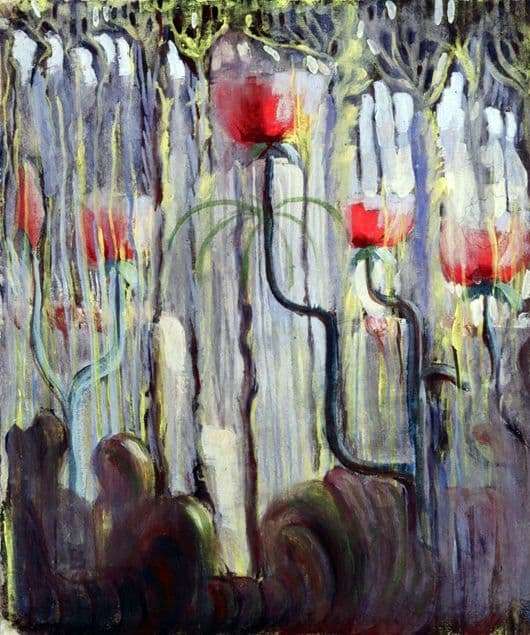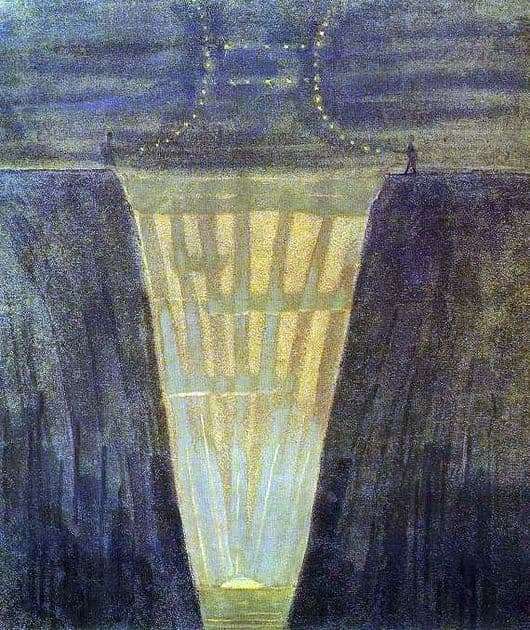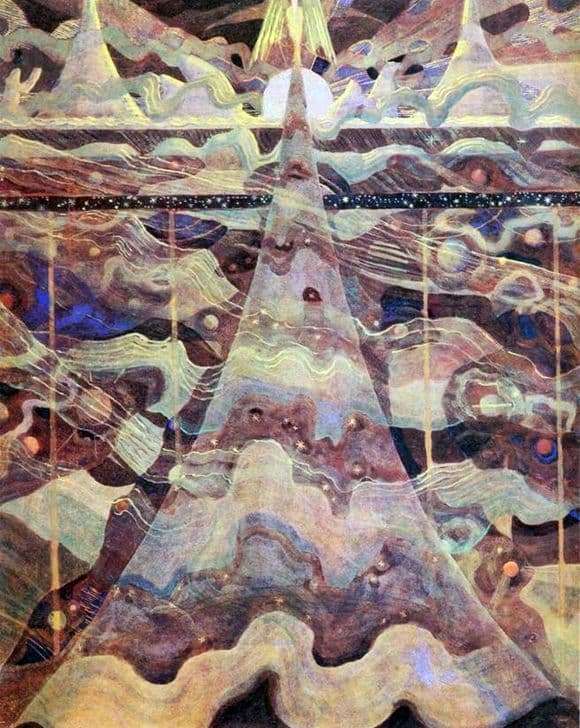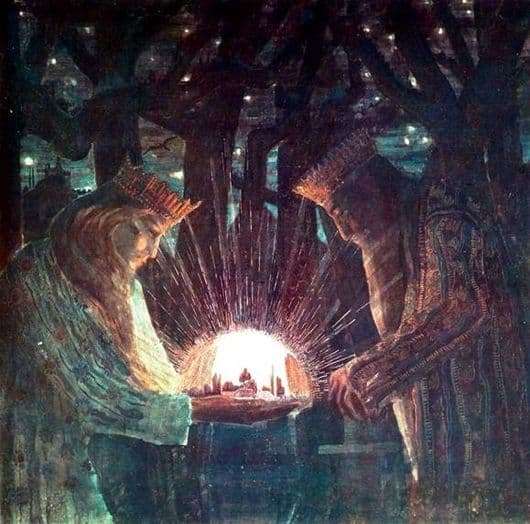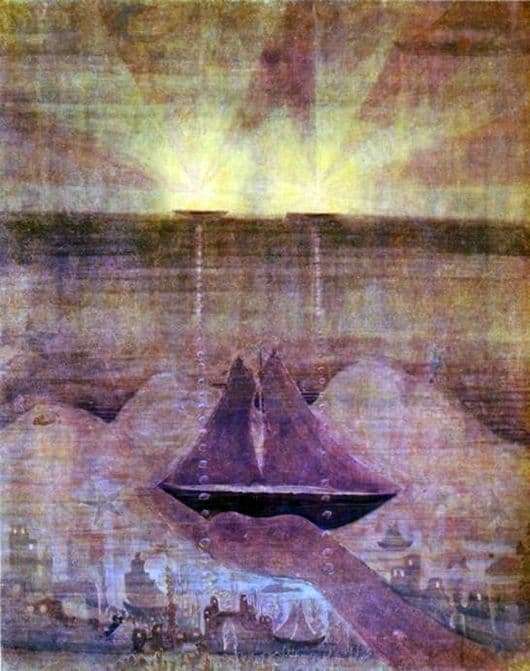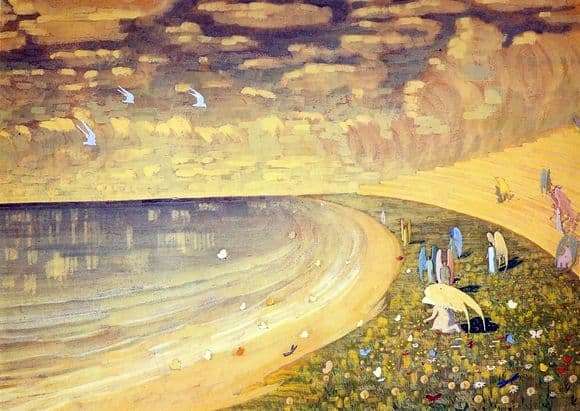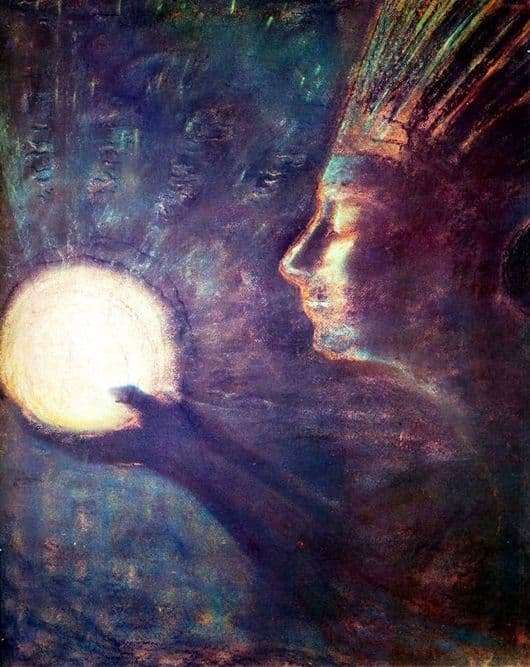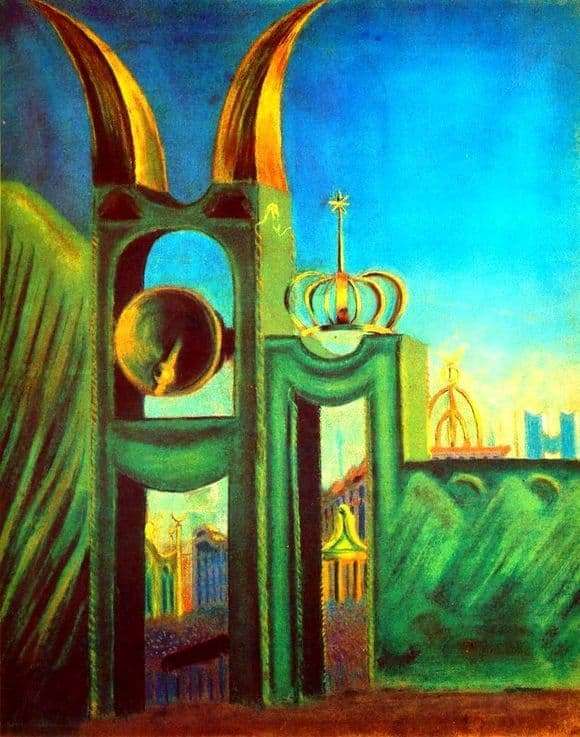
The cycle of paintings created in 1903.
Čiurlionis was a science fiction painter. But the most suitable word for defining his painting is phantasmagoria. The artist creates a real cosmos in which sounds, colors and forms intertwine in an odd way. A person simply has no place in it. That is why he portrays not people, but figures according to patterned patterns.
In the world of the painter, soul and face are missing. The viewers see nothing strange or unnatural about it. Phantasmagoria simply leaves no place for man. And it is right.
In the first picture you can see the people who gathered at the gates of the city. Here stands the coffin. They are united in this grief. It seems that all inanimate objects came to life on the canvas. The whole city expresses condolences.
In the second picture in the foreground, the viewer sees the coffin. This is a very scary and strong chord that seeks to appeal to the sun itself. The call did not go unanswered, so it gradually darkens.
In the third picture, a long line of people goes to the funeral. Čiurlionis depicts this event spectacularly. He skillfully uses bright colors. Paints amaze with the completeness.
In the images of the paintings of this cycle, the inimitable color of fading, which the artist will develop in the future, is beginning to make its way. Most likely, the bright colors of the first five canvases just for him. This is necessary so that the chords of the final will be shaded much sharper. This will allow to feel the piercing truth that death rules in life.
People wander to the cemetery. They seemed to go out. It becomes very clear that their fate is the same.
The death of one person can so agitate everyone only on condition that they are focused on themselves. Personality is valuable in its own eyes. Refined and deep life necessarily contrasts with the inevitable terrible end.
Description of the painting by Mikalojus Čiurlionis “Funeral Symphony”
